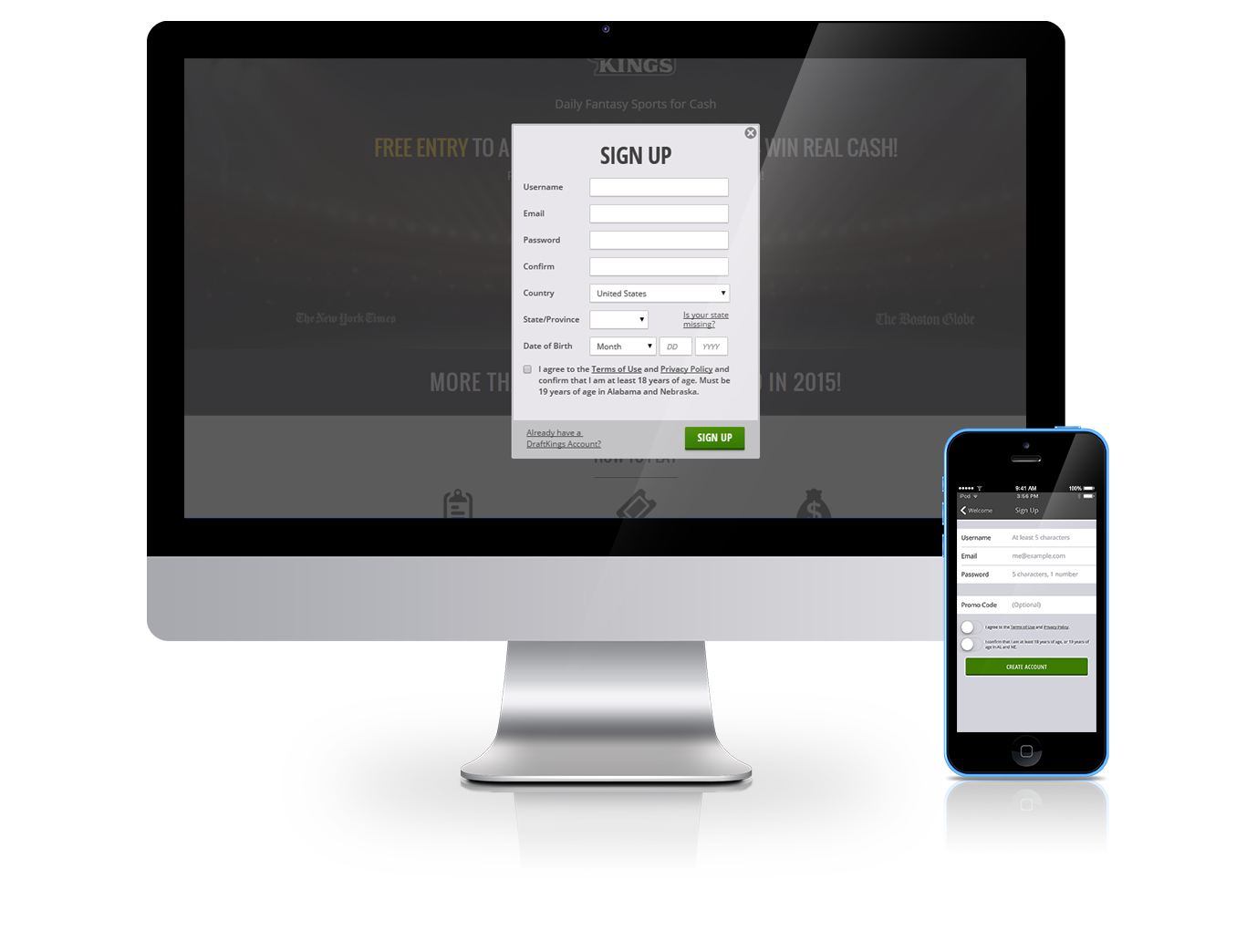DraftKings Registration Form
- aside
- Category: UX & UI Design
- Permalink

Project Samples
The Challenge
Pre-existing registration form on web and in the native app had a very poor first-time conversion rate due to confusing validation methods. The hypothesis was that inline error validation and real-time error checking will enhance usability and increase conversion. Goal was to improve conversion and decrease time spent on the form.
My Role
Create new validation methods and form layout for both web and native app, staying within business and compliance needs.
The Approach
The pre-existing form validation was very poor. When a user would trigger negative validation, they would not discover the error until after submission. If this wasn’t bad enough, the error would trigger at the top of the form. So if the user had multiple errors, the form fields would be pushed down due to multiple lines of error text. The user was forced to manually relate the error text to the appropriate field. This would substantially increase time spent on the form, and often yielded drop-off.
Based on research, inline validation significantly improves form conversion while reducing errors. Therefore, the best method to improve conversion would be to validate input at a field level. Errors are displayed below the field, and success is indicated.
One of the challenges was due to multiple levels of validation on specific fields. For example, in my spec, the username field validates the availability of that username. This is a server-side validation that is best handled pre-submission. However, a user may correct this and enter an untaken username and still not meet the username field requirements. Ideally, field requirements should be outlined upfront, but this was not possible with the space given. So, the field requirements are displayed if a user meets the username availability restrictions but does not meet the field requirements.
The new web form was shipped as an A/B, and showed a 20% improvement conversion. Unfortunately this upgrade was rolled back recently due to 3rd party compliance integration on web, but is on the roadmap for re-release.


